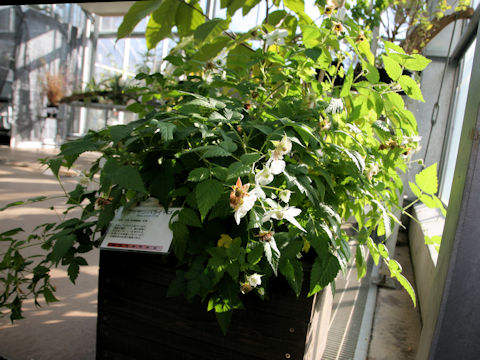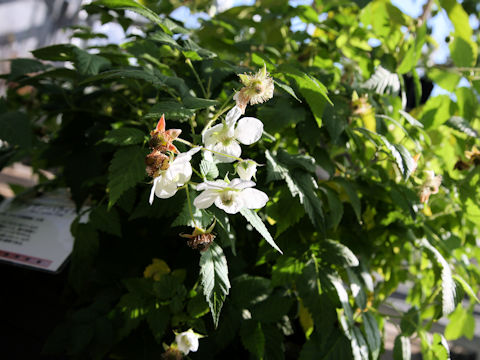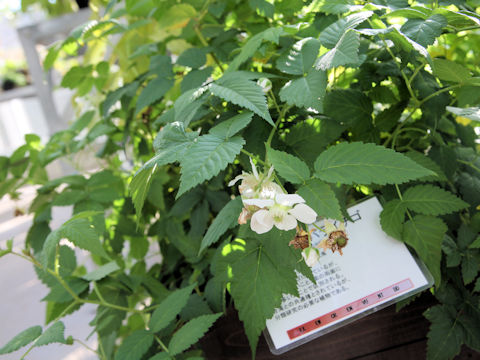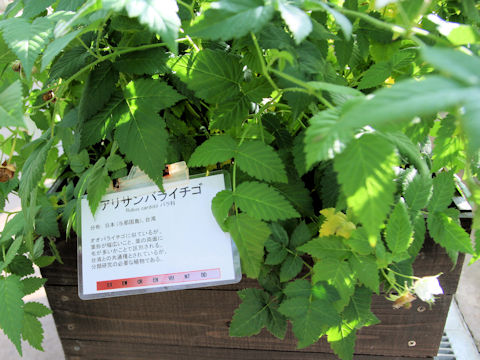
|
The Taiwan raspberry (Rubus piptopetalus) belongs to Rosaceae (the Rose family). It is a shurub that is distributed to Yonakuni Island of the Ryukyu Islands, Taiwan, the Indo-China peninsula, China and India. Thsi shrub grows in open places, forest-edges, roadsides, grassland, and riverbanks, at altitudes from sea-level up to 1,000 m. The branches are straight to curved, with sparse prickles, densely glandular-pilose. The leaves are imparipinnate, up to 20 cm long, with usually 3-5 ovate-oblong to lanceolate leaflets. The leaflet have patently soft-hairy on the both surfaces, usually with some small prickles on the midrib beneath. The flower are solitary or few together terminating the branches. The petals are nearly orbicular, 8-14 mm long, white, shortly hairy outside. The fruits are etaerio of drupelets, ovoid to globose, sometimes more ellipsoid, 1-2 cm across, red when ripe. It is also called "Arisan-oobara-ichigo" or "Taiwan-yabu-ichigo". In Taiwanese Mandarin, it is called "虎婆刺" or "虎梅刺".
The species name tag of "Tsukuba Experimental Botanical Garden" stated that "The scientific name is Rubus cardotii. It is a common species with Taiwan, but it is a plant that requires classification research." On this page, "Arisan-bara-ichigo" is synonymous with "Taiwan-yabui-ichigo" (Taiwan raspberry) based on the paper by Naohiro Naruhashi published in 2020 and the paper by "Plants of Taiwan".
|



